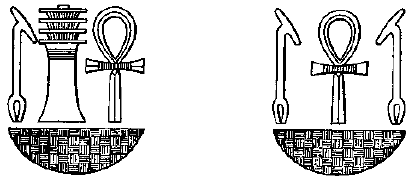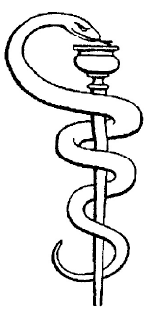|
5. MARY MAGDELENE
According to
Sir Laurence Gardner, Mary Magdalene was known in the
Languedoc as the ‘Mistress of the Waters’.1 This title aligns her
with the Mother Goddess Acca (Isis). As the Miriam, she was the Head
Sister of the Order of Dan. Her order appears to be the continuation
of the mysterious
tribe of Daniel. Daniel (‘God is my judge’) was
not a personal name. It was a group of people. The question who or
what then are the Daniel takes on paramount importance.
In her Woman’s Encyclopedia of Myths and Secrets, Barbara Walker
answers this question by saying ‘Daniel’ was a title used to
distinguish “a person of the Goddess Dana or Diana.”
3
Diana is the same as D’Inanna or Inanna.
There’s your trouble. That is exactly the same meaning as the Celtic
Tuatha De’ Danann (‘Children of the Goddess Danu’).
Tuat is the root for also:
-
Tuat, the Egyptian name for the
Inner World,4
-
the root of Taautus, another name for Thoth
5
-
Taaut the Egyptian name for the great serpent (soul) encircling
the Earth,6 whom Gnostics identified with Jesus.
This is no coincidence. There are plenty of historical connections
between the people of Daniel, the Tuatha De’ Danann (pronounced thoo-AH-huh
duh-DAH-nun), and the Egyptian tribe of Thoth. As we will see, they
were later known as the David and later as the Druids.
In Irish history, the M-Istical Tuatha De’ Danann, are described as
heaven-sent ‘gods, and not-gods’. They are compared with the
Sanskrit deva (shining one, god) and adeva (Devil), which became
daeva (devil) in Persian. The Old English divell (devil) can be
traced to the Roman derivative divus, divi: gods.
This confusion may explain why the writers of the Old Testament
didn’t particularly care for the Danites, whom they said would judge
(balance) the people and were called Serpents by Jacob,7 a title
typically (and erroneously) reserved for Satan, whom the Egyptians
called Sata, serpent.8
According to Celtic/Druid legend, on Beltane or May Day, in a fog,
the Tuatha De’ Danann came ‘through the air’ to Ireland to teach
young men sacred wisdom. Their arrival was so profound it was said
to have covered up the sun for three days (just like happens in the
book of Revelation). The Tuatha De’ Danann were generous too. They
brought with them four treasures or power tools:
They placed these treasures on a silver platter called the Talleior.
These treasures were housed in the so-called Cave of Treasures,
inside the Mountain of God, where burns a perpetual flame.9
To me, this description rang of the Temple of Solomon at-op Mount
Moriah. Especially since the Anu were known to have occupied the
site of the Temple Mount back in the pre-Jewish days when it was
called Op-Hel.
After conquering Ireland, the Tuatha De’ Danann were themselves
conquered in a shoot out with another tribe, the Sons of Mil (the
Gaels). At the armistice meeting with their conquerors, a poet named
Amergin (or Amorgen) split the land into an upper and lower part
(like Egypt, which was reunited by Thoth, the Peacemaker).
Amergin is someone to keep an eye on. In one of his famous poems,
The Song of Amergin, he repeatedly identified himself as ‘I Am’,10
the name of the Hebrew god
Yahweh, the god of Daniel. (The fact that
the name of the god of these stories is identical certainly links
them.) That same poem refers to Amergin as “the Word of Science.”
Per this agreement, the people of Daniel were required to leave the
surface of the Earth and live in an underground kingdom accessed
only through the sidh-mounds (pronounced “she”) or ‘hollow hills’ of
Ireland.
Correspondingly, the Egyptian Tuat, the ‘Place of Ascending’,11 was
an inner realm accessed through a ‘mound’ we call the Great Pyramid.
In the sidh-mounds the Tuatha de’ Danann assumed invisibility, with
the power to reappear in human form at will or ascend to higher
plane(t)s. This is one of the 8 magic powers or the ashta-siddhis,
of the yogi masters. The Buddhist title Siddhartha literally means
“rich in magic.”12 This title was claimed by Siddhartha Guatama, the
seventh in a line of reincarnated Buddhas.
These 8 spiritual blessings are a mystery. Do they correspond with
the 8 Beatitudes of Jesus?
From their sidh-mounds the Tuatha De’ Danann, the continued to teach
their forbidden mysteries.
It was the special duty of the Druids, writes W.Y. Evans-Wentz in
The Fairy Faith in Celtic Countries, to act as intermediaries
between the world of men and the invisible or underground world of
the Tuatha de’ Danann. They are considered to be direct descendents
or reincarnations of
the early gods of Sumeria, the Anu.13
Wentz notes that these sidhe people are described as a race of
majestic appearance and marvelous beauty, in form human, yet in
nature divine.14 They
are divided into two classes: those which are shining, and those
which are opalescent and seem lit up by a light within themselves.15
The word sidh informs us of the nature of these forbidden teachings
the Daniel had access to. Sidh appears to be related to the Latin
sedes and the Sanskrit siddha, both words meaning power. Some of
these sidh-mounds or power vortexes, particularly those of Rosses
Point country in Ireland,16 gained renown as possible locations for
stargates or interdimensional gateways to and from the innerwor(l)d
home of the Tuatha De’ Danann.
King Arthur of the Grail legend is considered to be one of these
reincarnated Anu siddh heroes. After his death he was taken to live
in the Otherworld of Sacred Apple-Groves, Avalon, and was prophesied
to reincarnate as a Messiah.17
As noted, Siddh-Artha Guatama Buddha (a name which rings of Siddh
Arthur) is the seventh in a line of reincarnated Buddhas who is
prophesied to appear on Earth at the end of the world as the avatar
Maitreya. Tantric texts claim Maitreya will be able to walk on
water, make himself invisible, create and destroy matter, and
transmute base metals into gold.
After their banishment to the interior world, the Tuatha de’ Danann
were transformed into devils by
the Catholic Church. Their stature
was considerably shrunk in size, too. This is evidenced by the term
henceforth applied to them, fairy folk.
The Tuatha de’ Danann were described as tall, blond and
fair-skinned. By adding a ‘y’ suffix to their name, a demonic or
diminutive image was created.18
The Church is understandably reluctant to admit this (just as the
Japanese are sheepish about discussing their ancestors the Ainus --
the Children of Diana -- who were fair, tall and blond and came from
the sky, left for the skies, and will return from the skies).19
As they withdrew, the Tuatha de’ Danann prophesied that man would
eventually destroy himself through lust and sin.
Despite their apparent contempt, the ancients accepted the Dan-El or
Daniel, as wise people and prophets of immense importance. As judges
they were the Messiahs or ‘balancers of Heaven and Earth’.
THE ALL
Connecting Mary Magdalene, the Head Sister of the Order of Dan, with
the Biblical people of Daniel and the Tuatha De’ Danann slips the
‘decoder ring’ of Rennes back on our finger. It ‘opens the book’ on
her secrets: the existence of the Dan’s stargate at Rennes-le-Chateau
linking Earth with AMOR.
The fact that in the Hindu Vedas the word Anu or Danu means “the
waters of heaven or space,” 20 and is only one letter away from the
Egyptian goddess Nu or Nut, returns us to Egypt and the secrets of
the gods.
As noted, early Christian texts describe Mary Magdalene as ‘the
woman who knew the All’. Cross-checking Egyptian mythology, we
discover an astonishing Egyptian description of ‘the All’.
21
The side posts of Egyptian temple’s entrance doors are often
ornamented with horizontal bands of bas-reliefs portraying the three
symbols:
-
Uas -- the tree branch, commonly
called the ‘Key of the Nile’
-
TET or Djed (center) -- the
Pillar of Osiris
-
Ankh -- ‘life’.

Uas Djed Ankh Uas Ankh Uas
These symbols are placed on a basket. This basket is
the All.
One of the key figures in Egyptian mythology associated with the All
is Ptah or Ptah-Tenen, which means “risen or raised Earth.” Egyptian
myth said Ptah formed and shaped the material world.
Ptah was most commonly depicted as a bearded man wearing a blue
skull-cap. His close-fitting garment is made of bird feathers. In
his hands he holds the forked uas (“branch”), the ankh (“life”), and
the djed (“stability”).

Ptah, covered in bird feathers,
holding the combined Uas, Djed and
Ankh
In Egypt “Ptah is usually regarded as a form of the Sun god,” says
Egyptologist E.A. Wallis Budge, “and as the personification of the
rising sun…”22 Elsewhere he is described as the creative aspect of
Ra. His name means “to open” by “sculpting or engraving.” He was a
master at working with stone. As John Anthony West observes, no
sculptor sculpts without “inspiration,” the muse. That is Ptah.
Christians called him Pater (‘Father’) or Peter (‘Rock’, ‘Stone’),
and assigned him the role of holding the Key to Heaven.22
Ptah was also a great worker of metals. According to Budge, he was
also both a smelter and a caster, and sculptor, as well as the
master architect and designer of everything which exists in the
world.24
The Greeks and the Latins claimed Hephaistos and Vulcan as his later
names. Hephaistos was an early smith god, cast down from the
Olympian’s heaven by Zeus, for trying to protect his mother Hera
(Earth). Like Asclepius, he was associated with lightning.25 A
lightning bolt from Zeus killed Asclepius because he was afraid that
such a skillful physician could make all men immortal.

The Staff of Asclepius shows a serpent wound around a staff.
It is
the symbol for medicine.
From the back of Ptah’s neck hangs the
menat, a symbol of magical
fertility in earthly happiness that promoted fruitfulness and
health.26
He stands on a pedestal made in the shape of the sign maat, “Truth,”
“Mother.” 27 Maat’s symbol was the feather of Truth against which she
weighed each man’s heart-soul in her underworld Hall of Judgment.
Thus Ptah, the bird-man, is clothed in the feathers of the Truth of
Maat.
Those who lived by Maat took a sacramental drink, comparable to the
Holy Grail, which conferred ritual purity.28
Maat is probably Tiamat, one of the Pleiades. There is an intimate
connection in the early legends of this group of seven stars with a
flock of birds, especially doves, and the Grail. In the Odyssey
Homer tells us that,
“No bird of air, no dove of swiftest wing,
that bears ambrosia to the ethereal king.”
The doves of Nestor’s cup described by Homer in
the Iliad are also
thought to refer to the Pleiades.
Fascinatingly, the Pleiades have also been likened to a bunch of
grapes or Blue Apples. Ancient coins depict doves with bodies formed
by bunches of grapes. The dove appeared in migration at the time of
vintage, its purple-red breast like wine reminding the wine makers
of their grapes.29
Suddenly, the story of Jesus’ “curing” Mary Magdalene, his chief
apostle, of “possession” by “seven demons” takes on New meaning.
These seven demons may well be the seven stars of the Pleiades. His
“curing” would therefore represent him mystically attuning her soul
or telling her stories about the seven stars (or Blue Apples) of the
Pleiades.
The grapes of the Pleiades (the Blue Apples) may be the same as the
seven demons which “possessed” Mary Magdalene, figures prominently
in the mystery of Rennes.
Back to
Contents
|


